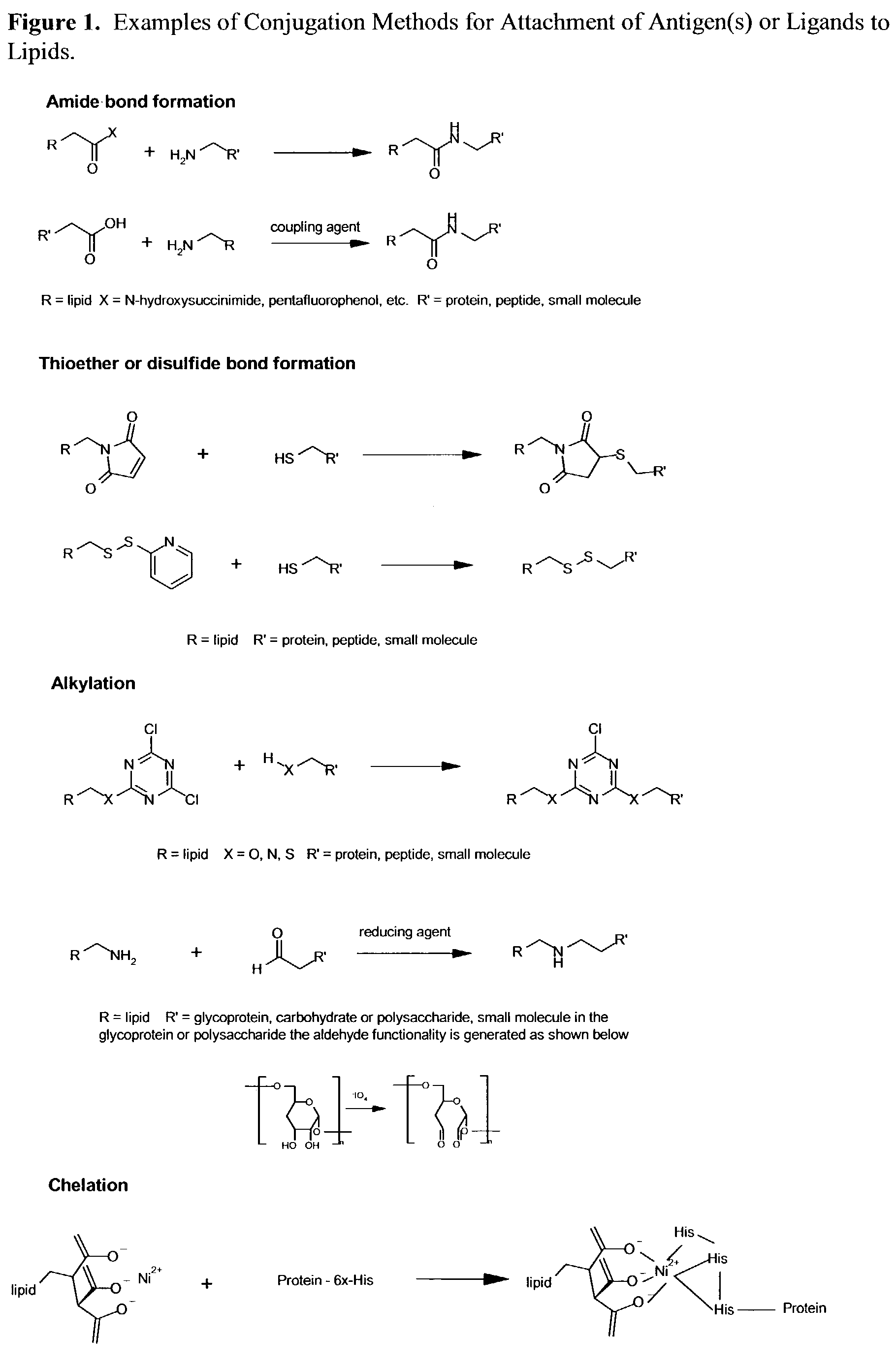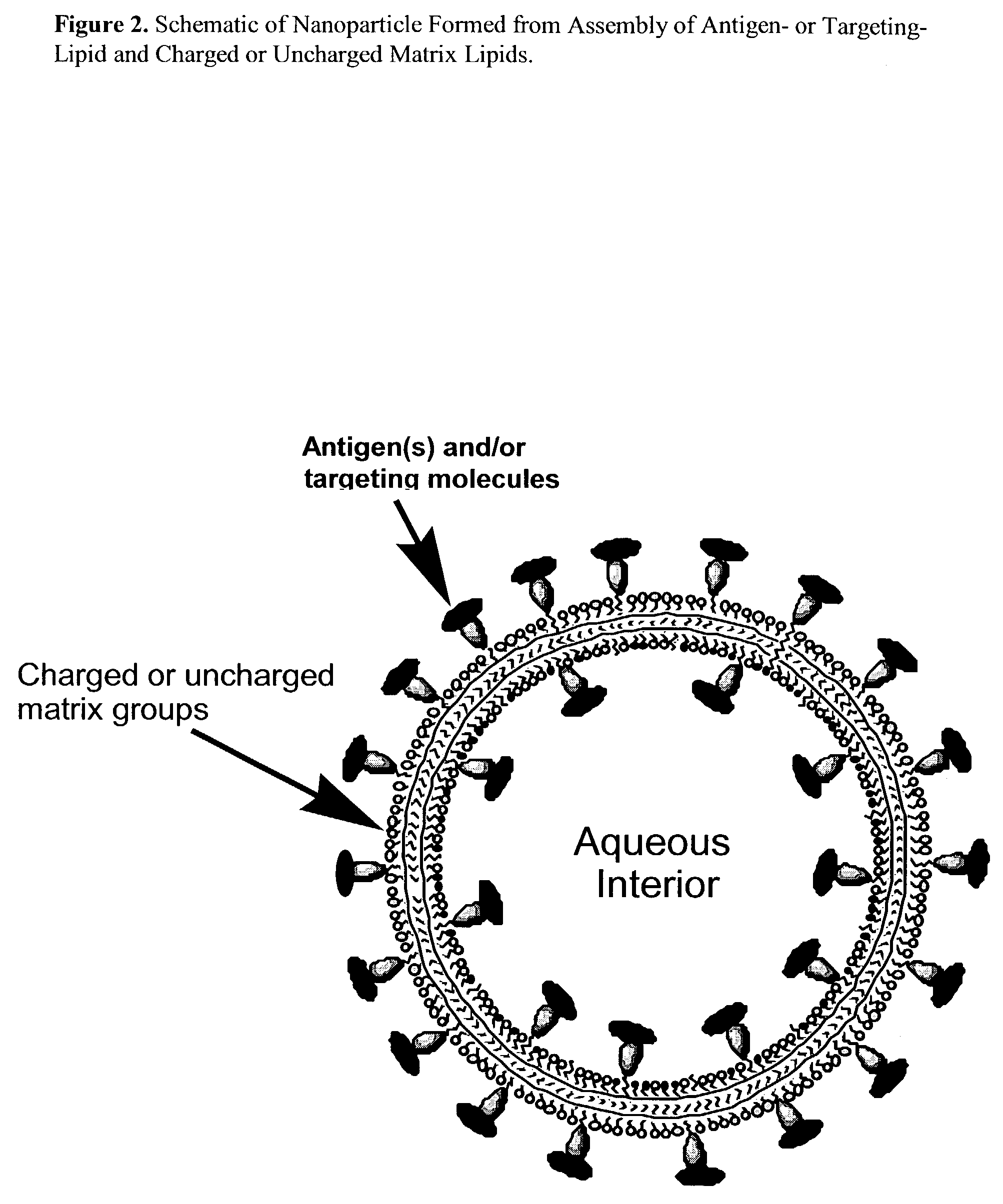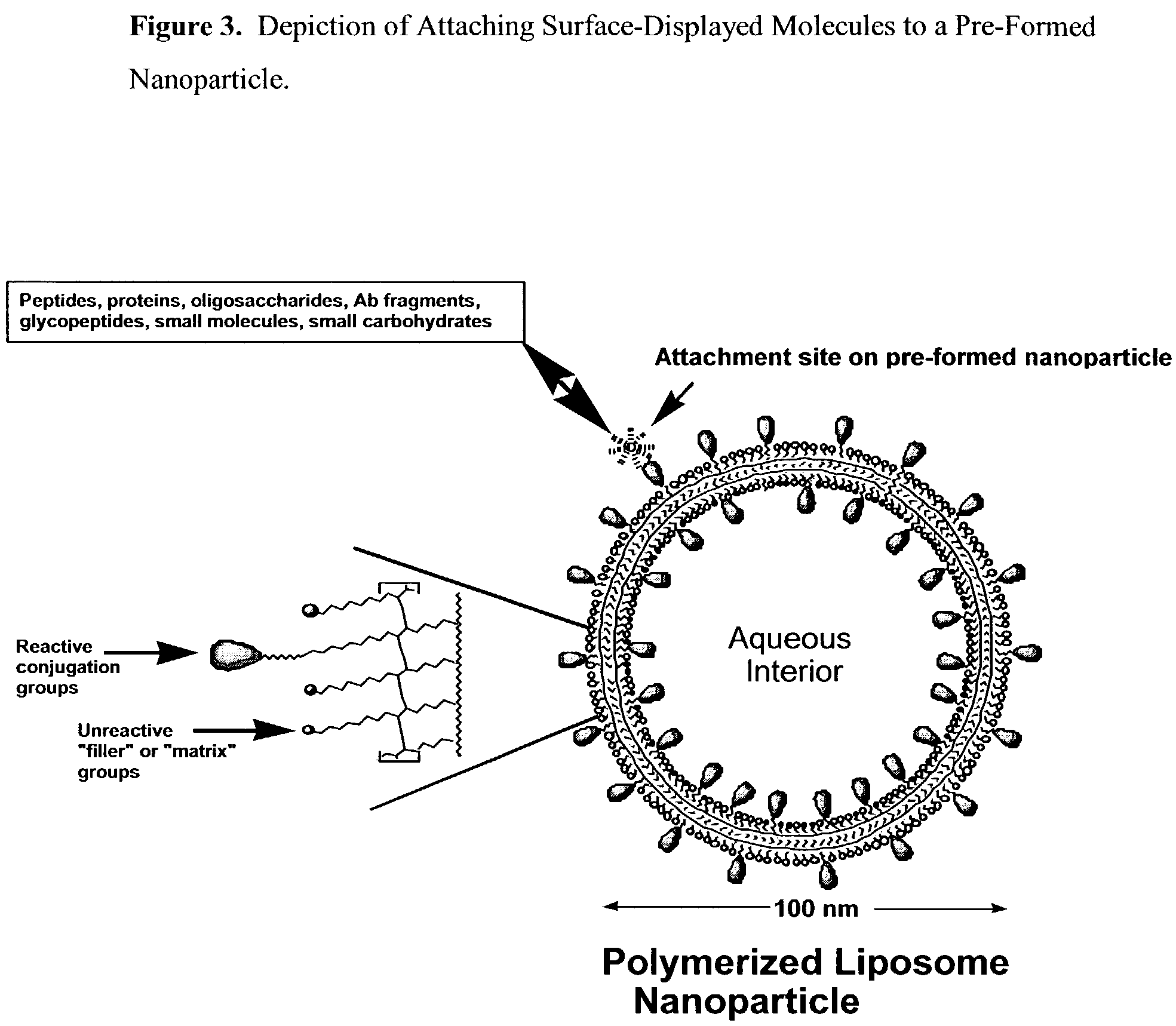Nanoparticle vaccines
a technology of nanoparticles and vaccines, applied in the field of nanoparticle vaccines, can solve the problems of unlikely toxicity or alteration of activity of nanoparticles, and achieve the effect of simple and inexpensive synthesizing
- Summary
- Abstract
- Description
- Claims
- Application Information
AI Technical Summary
Benefits of technology
Problems solved by technology
Method used
Image
Examples
example 1
Liposome Preparation.
[0114]Polymerized polydiacetylene (PDA) liposomes were prepared according to the method described by Spevak, et al., “Carbohydrates in an Acidic Multivalent Assembly: Nanomolar P-Selectin Inhibitors,”J. Med. Chem., 39(5):1018-1020 (1996), which is hereby incorporated by reference in its entirety. Briefly, polymerizable lipids and antigen- or targeting-lipids were mixed and evaporated to a film. Deionized water was added to the films to give a 1 mM (total lipid) suspension. The suspension was heated to between 70-80° C. and probe sonicated for 30 min. The resulting clear solution was then cooled to 5° C. for 20 min. and polymerized by UV light irradiation (254 nm). The deeply colored solutions were syringe filtered through 0.45 μm or 0.2 μm cellulose acetate filters in order to remove trace insoluble aggregates. Essentially all of the lipid material (>98%) is incorporated into the soluble liposomes. In the case of carbohydrate-displaying nanoparticles, Dionex Ana...
example 2
Candida albicans Glycoprotein Presentation on Nanoparticles for Use as a Vaccine.
[0115]Glycoproteins from the cell wall of Candida albicans are highly mannosylated, phosphomannoprotein complexes that are weak immunogens when administered alone or with adjuvants (CFA, Ribi RS-700, etc), but conjugation to a carrier protein like BSA or encapsulation in traditional liposomes elicits increased immune responses that protect mice against disseminated and mucocutaneous candidiasis (Han, et al., “Antibody Response that Protects Against Disseminated Candidiasis,”Infect. Immun. 63:2714-2719 (1995); Han, et al., “A Vaccine and Monoclonal Antibodies that Enhance Mouse Resistance to Candida albicans Vaginal Infection,”Infect. Immun. 66:5771-5776 (1998); and Han, et al., “Candida albicans Mannan Extract-Protein Conjugates Induce a Protective Immune Response Against Experimental Candidiasis,”J. Infect. Dis. 179:1477-1484 (1999); which are hereby incorporated by reference in their entirety). Vaccin...
example 3
Candida albicans Carbohydrate Antigen in Conjunction with T-Cell-Directing Peptides as Presented on a Nanoparticle.
[0123]As reflected in the biomedical literature, a vaccine approach based on small peptides or carbohydrates has remained somewhat limited. This is likely related to their low immunogenicity and the scarcity of adjuvants that can be used with them in humans. Generally, small molecules act as haptens that lack the necessary Th epitopes to stimulate an effective immune response. Conjugation of small peptides or non-protein epitopes to other proteins, liposomes or polymer carriers has proven to be useful in stimulating antibody responses in a number of systems. The carrier serves a dual function, in addition to polyvalent peptide presentation, because it can also display a Th epitope. Long-lasting and potent immune responses have been elicited by small peptides covalently conjugated to the surface of the vesicle additionally carrying an adjuvant such as monophospholyl lipi...
PUM
| Property | Measurement | Unit |
|---|---|---|
| Immunogenicity | aaaaa | aaaaa |
Abstract
Description
Claims
Application Information
 Login to View More
Login to View More - R&D
- Intellectual Property
- Life Sciences
- Materials
- Tech Scout
- Unparalleled Data Quality
- Higher Quality Content
- 60% Fewer Hallucinations
Browse by: Latest US Patents, China's latest patents, Technical Efficacy Thesaurus, Application Domain, Technology Topic, Popular Technical Reports.
© 2025 PatSnap. All rights reserved.Legal|Privacy policy|Modern Slavery Act Transparency Statement|Sitemap|About US| Contact US: help@patsnap.com



